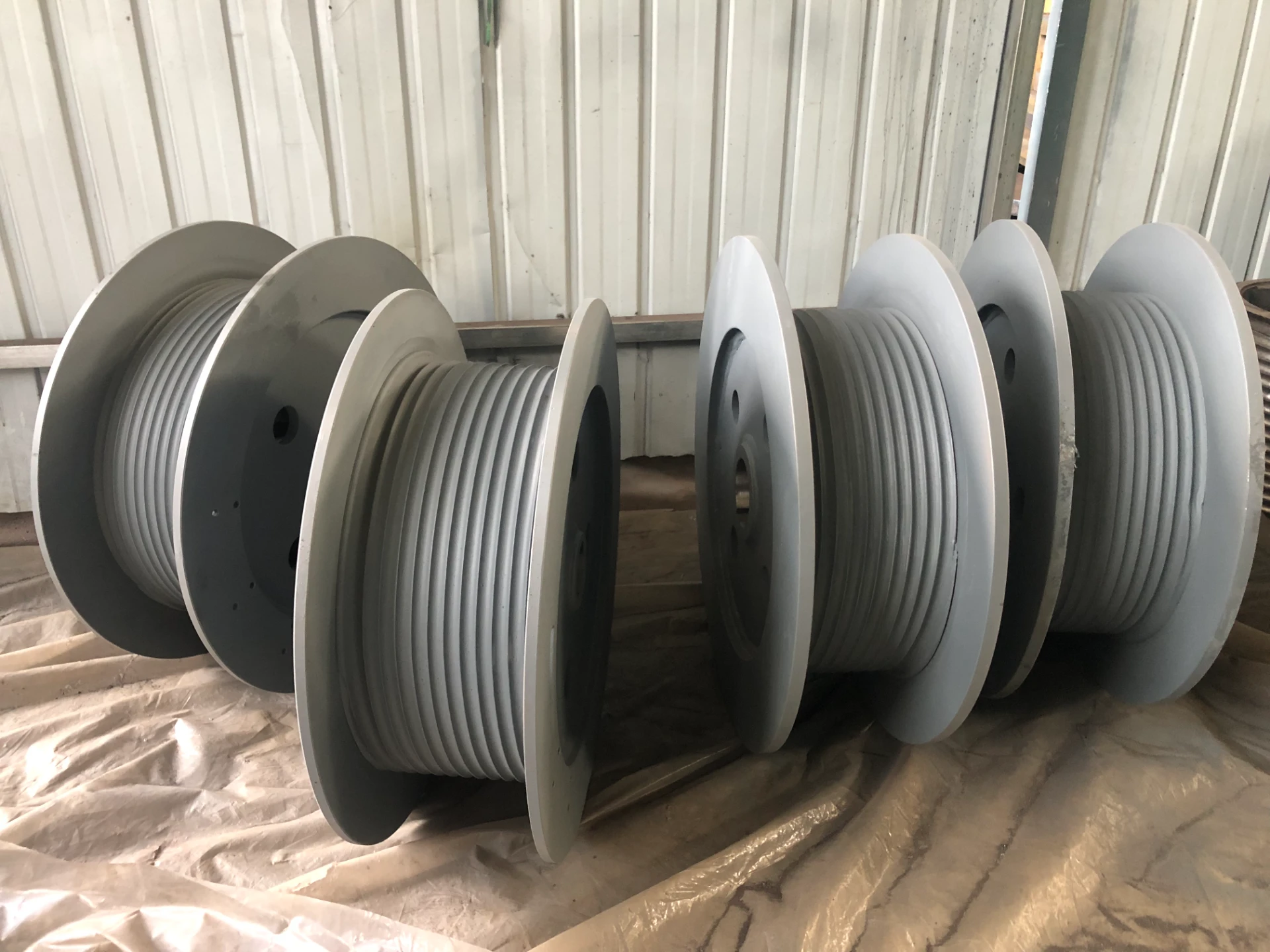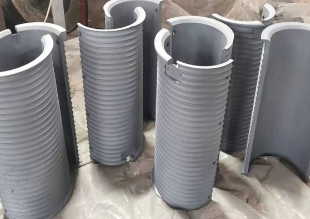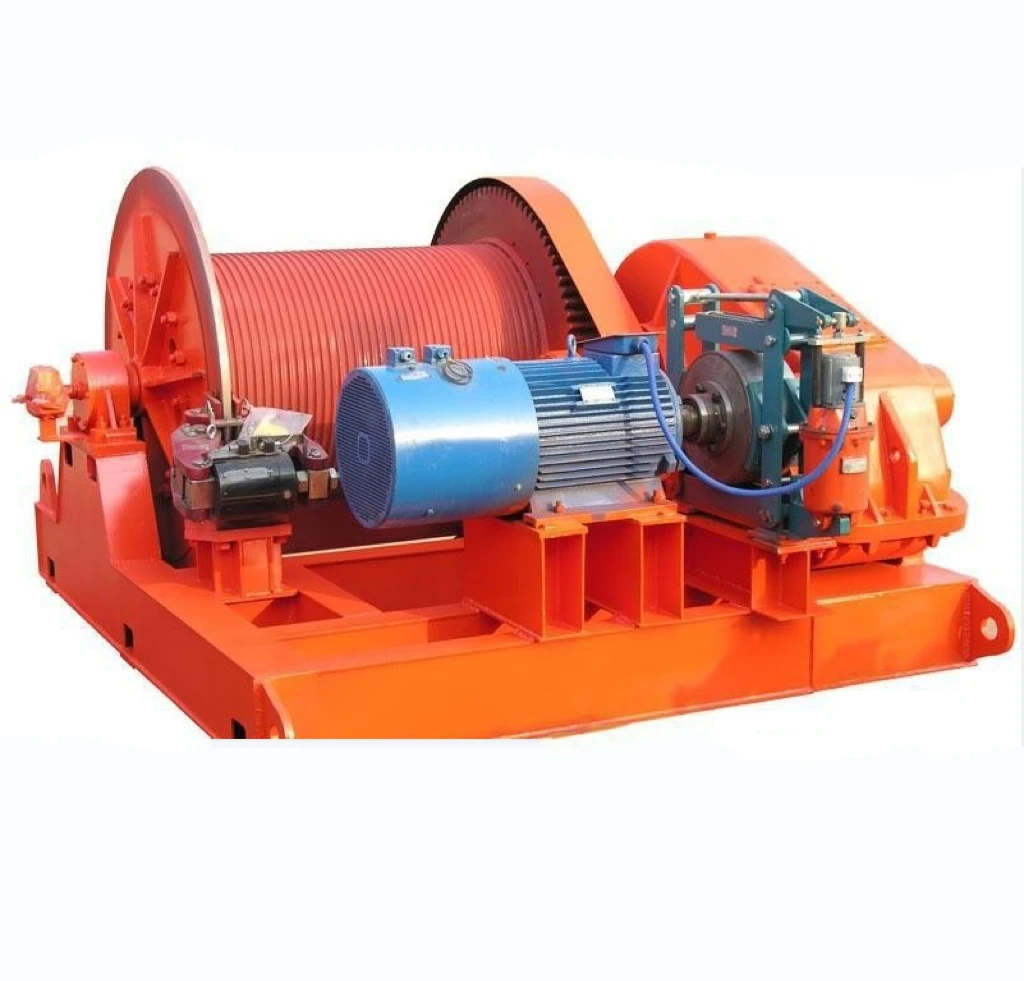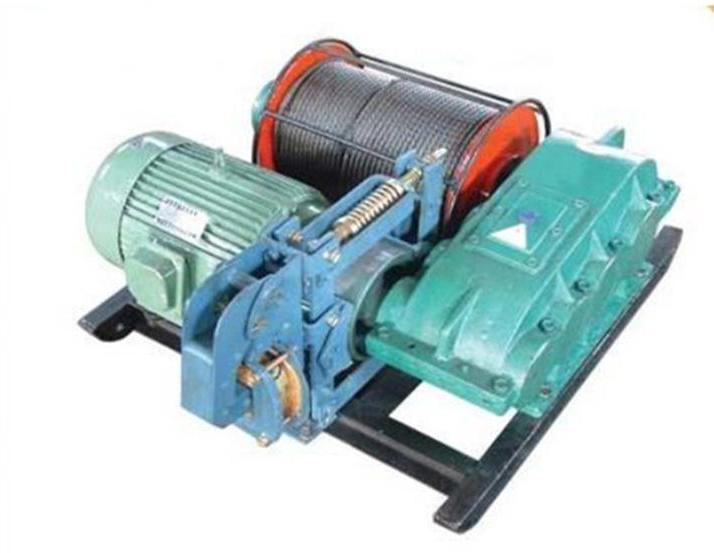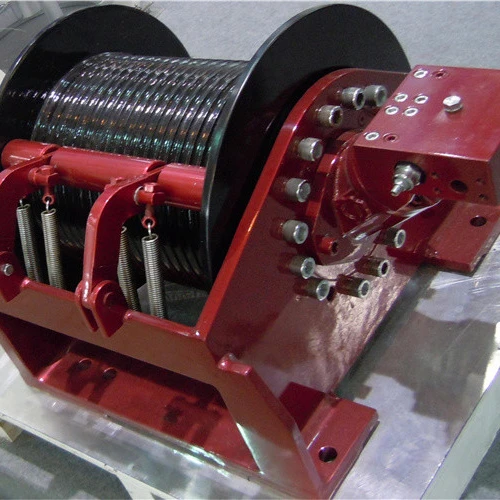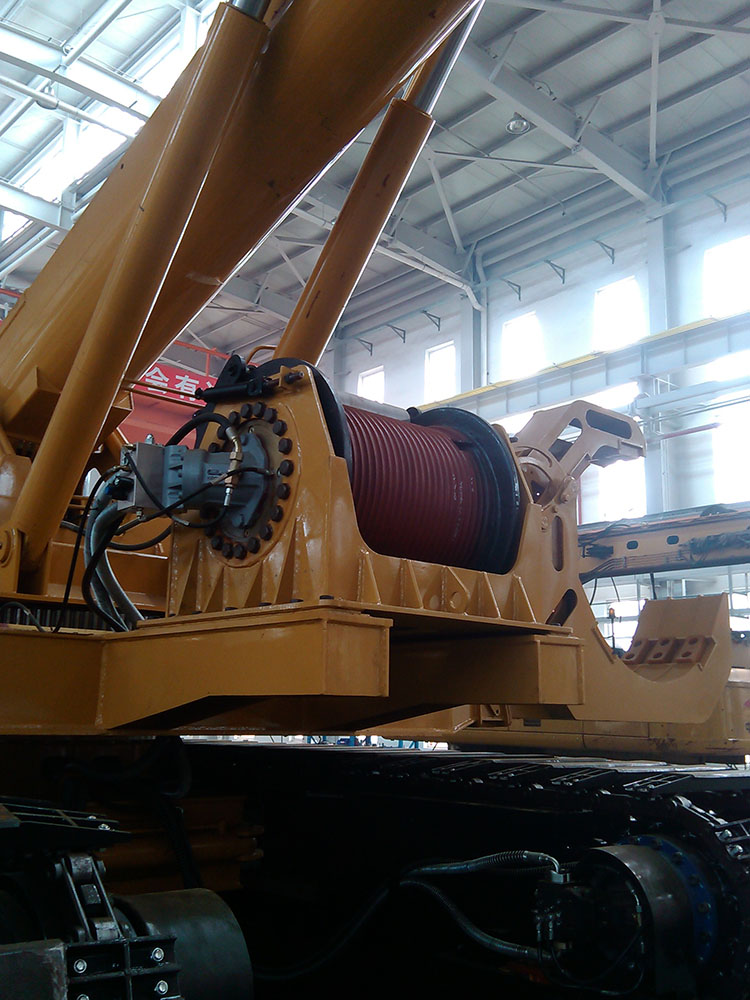Hydraulic Cable Winch – Efficient Heavy Lifting Solutions for Industry & Disaster Relief
Hydraulic Cable Winch: The Unsung Hero in Modern Industry
If you’ve ever watched a ship being pulled into a harbor, a heavy load being hoisted, or an emergency relief team clearing a fallen tree, you may have seen a hydraulic cable winch doing its silent work. These devices, though often overlooked, play a pivotal role worldwide. They might not make headlines, but understanding their capabilities touches on topics like safety, efficiency, and global industrial progress.
Why does this matter on a global scale? The simple truth is: hydraulic cable winches help solve problems where manpower or electric power alone won’t cut it. That means everything from construction sites in bustling cities, remote mining camps, to disaster zones where infrastructure is patchy or non-existent. They’re vital, versatile—and frankly, a bit of an engineering marvel.
The Global Spotlight on Hydraulic Cable Winches
Globally, industries like shipping, mining, forestry, and construction collectively employ thousands of hydraulic cable winches. The International Organization for Standardization (ISO) has even released guidelines ensuring safety and efficiency for heavy lifting appliances, which highlight the hydraulic winch’s importance.
According to the World Bank, infrastructure development projects in emerging economies have surged by nearly 25% over the last decade, amplifying the demand for reliable, heavy-duty equipment. But here’s the kicker—the problem hydraulic cable winches tend to solve is not just brute force lifting; it’s about controlled precision and adaptability in diverse environments.
Think about remote regions with unpredictable weather or humanitarian missions where electricity might be limited. The hydraulic cable winch steps in to perform where electric or manual alternatives fall short, making tough jobs safer and faster.
What Exactly Is a Hydraulic Cable Winch?
Simply put, a hydraulic cable winch is a mechanical device that uses hydraulic power—pressurized fluid—to wind and unwind a cable or rope. The winch translates hydraulic energy into controlled pulling or lifting force. Unlike electric winches, which rely on motors, or manual ones, these devices use hydraulic pumps, often powered by engines or external sources, allowing for high torque and smooth operation.
They serve critical roles across industries: from hoisting construction materials several stories high, to pulling heavy logs in forestry, to cable tensioning for telecommunications infrastructure. The adaptability of hydraulic cable winches means they support both big industrial installations and smaller-scale, high-precision tasks.
Core Components that Make Hydraulic Cable Winches Tick
- Hydraulic Motor: The powerhouse that converts pressurized hydraulic fluid into rotational force, giving the winch its strength and smooth performance.
- Gearbox: Offers the torque multiplication needed to pull or lift heavy loads with precision control.
- Drum and Cable: The spool around which the cable winds. Drum size affects how much cable can be stored.
- Brake System: A crucial safety feature that holds the load securely when the winch isn’t operating.
- Control Valve: Regulates hydraulic fluid flow, giving operators precise control over speed and force.
- Frame and Mounting: Built tough to withstand high stresses and rough outdoor environments.
Many engineers say the beauty lies in this interplay: the hydraulic motor and control systems allow for smooth, variable speed control, which electric winches can find tricky—especially under heavy load or adverse conditions.
Global Applications: From Disaster Zones to Industrial Giants
Hydraulic cable winches shine in myriad ways worldwide:
- Post-Disaster Relief Operations: In areas hit by earthquakes or floods, power outages are common. Hydraulic winches provide reliable lifting and moving power for debris clearing and emergency shelters.
- Mining and Extraction Industries: Remote mines use hydraulic cable winches for hauling heavy ores across tough terrains and underground locations.
- Shipping and Maritime: Hydraulic winches control anchor chains, cargo lifts, and mooring lines—a testament to their strength in wet, corrosive environments.
- Forestry and Logging: Winches pull felled trees efficiently, particularly in rugged forests where vehicles can’t reach.
For example, a forestry operation in Canada recently highlighted how upgrading to a hydraulic cable winch reduced manual labor injuries by 40%, as tasks that were once strenuous now operated with much more control and safety.
Technical Specifications: A Typical Hydraulic Cable Winch
| Specification | Typical Value | Notes |
|---|---|---|
| Pulling Capacity | Up to 50,000 lbs (22,680 kg) | Varies by model and hydraulic system |
| Cable Diameter | 9.5 mm to 19 mm | Steel wire rope most common |
| Max Cable Length | 200 m (650 ft) | Depends on drum size |
| Operating Pressure | 3,000 psi (207 bar) | Standard for hydraulic system |
| Speed Range | 0 – 30 m/min | Variable speed control |
How the Top Hydraulic Cable Winch Vendors Stack Up
| Feature | LBS Winch | Global HydroTech | PowerLift Solutions |
|---|---|---|---|
| Max Pull Capacity | 50,000 lbs | 45,000 lbs | 40,000 lbs |
| Speed Control | Fully variable | Stepwise | Limited |
| Custom Mounting | Available | No | Available |
| Warranty Period | 3 years | 2 years | 1 year |
| Global Service Network | Extensive | Moderate | Limited |
Advantages & Lasting Value of Hydraulic Cable Winches
When you mix hydraulics with robust engineering, the result is a winch that’s:
- Reliable: Hydraulic systems tend to perform consistently under heavy loads and harsh environments.
- Cost-Efficient: Lower maintenance than electric motors, partly because of fewer moving parts and sealed systems.
- Safe: The brake and variable speed control reduce the risk of accidental load drops or jerks.
- Sustainable: They can integrate with engines or pumps running on biofuels or green energy, reducing the carbon footprint.
- Trustworthy: Operators feel more confident controlling heavy lifts smoothly—it helps preserve human dignity and safety.
There’s also an emotional side: technology that works the way you expect it to, always. It’s not just productivity; it’s peace of mind for workers who rely on it day in, day out.
Looking Ahead: Trends Shaping Hydraulic Cable Winches
Industry whispers talk about smarter, lighter, and greener winches. Imagine hydraulic winches with sensors delivering real-time load and performance data via IoT, or units powered by hydrogen fuel cells. Materials like carbon composites are creeping in to reduce weight without losing strength.
Automation is also on the horizon. Remote-operated hydraulic winches could make hazardous tasks safer. Policies encouraging green infrastructure could push manufacturers towards eco-friendly designs and recyclable components.
Challenges & How Experts Overcome Them
Hydraulic cable winches aren’t without hurdles. Fluid leaks, temperature sensitivities, and the occasional maintenance needs can be tricky, especially on remote sites. Plus, integrating electronics for smart control systems requires robust design to avoid damage.
However, innovative seals, advanced diagnostics, and modular designs are tackling these issues head-on. Many manufacturers now include easy-to-access service points and ruggedized electronics, while operator training programs reduce misuse.
FAQ: Your Top Questions About Hydraulic Cable Winches
Q1: What makes hydraulic cable winches better than electric winches for heavy-duty jobs?
A1: Hydraulic cable winches provide stronger torque at low speeds and greater control, especially in harsh environments or where electric power is unreliable. Their sealed systems also resist dust and moisture better, lowering maintenance needs.
Q2: How do I choose the right pulling capacity for my hydraulic cable winch?
A2: Calculate the maximum load your application requires and then add a safety margin—usually 20% or more. It’s best to consult specifications from trusted vendors like hydraulic cable winch producers to match capacity with your operational needs.
Q3: Can hydraulic cable winches be customized for special mounting or cable requirements?
A3: Absolutely. Many manufacturers offer custom mounting options and cable drum sizes to fit unique project demands, especially in specialized industries like mining or offshore operations.
Q4: What maintenance practices keep hydraulic cable winches running smoothly?
A4: Routine checks for fluid leaks, brake inspections, cable conditions, and ensuring clean hydraulic filters are vital. Training operators and scheduling preventive maintenance prolong service life significantly.
Q5: Is it possible to use hydraulic winches in cold climates or underwater?
A5: Yes, but it requires selecting appropriate hydraulic fluids rated for low temperatures and corrosion-resistant components. Specialized waterproof or submersible models exist for underwater tasks.
Wrapping It Up: The Long Haul with Hydraulic Cable Winches
In real-world terms, hydraulic cable winches aren’t just mechanical gadgets—they’re enablers of progress globally. Whether helping build bridges, clearing disaster zones, or ensuring safer work in remote areas, their blend of power, precision, and durability makes them indispensable.
If you’re involved in any heavy lifting or pulling operation, seriously consider how a hydraulic cable winch could transform your workflow. Reliable, efficient, and evolving—these machines carry more than loads; they carry industry forward.
Visit our website: https://www.lbswinch.com to explore the latest in hydraulic cable winch technology and secure your next-level operations today.
References
-
Double Drum Hydraulic Winch – Durable, Efficient Load Handling SolutionsNewsNov.25,2025
-
Hydraulic Drum Winches: Powering Heavy Lifting with Precision and DurabilityNewsNov.24,2025
-
Hydraulic Driven Winch – Reliable Heavy Lifting Solutions for Industry & ReliefNewsNov.24,2025
-
Hydraulic Crane Winch – Powerful & Precise Heavy Lifting Solutions | LBS WinchNewsNov.23,2025
-
Electric Over Hydraulic Winch: Efficient, Durable Lifting Solutions for Modern IndustryNewsNov.23,2025
-
Hydraulic Logging Winch Guide | Global Applications & InnovationsNewsNov.22,2025


